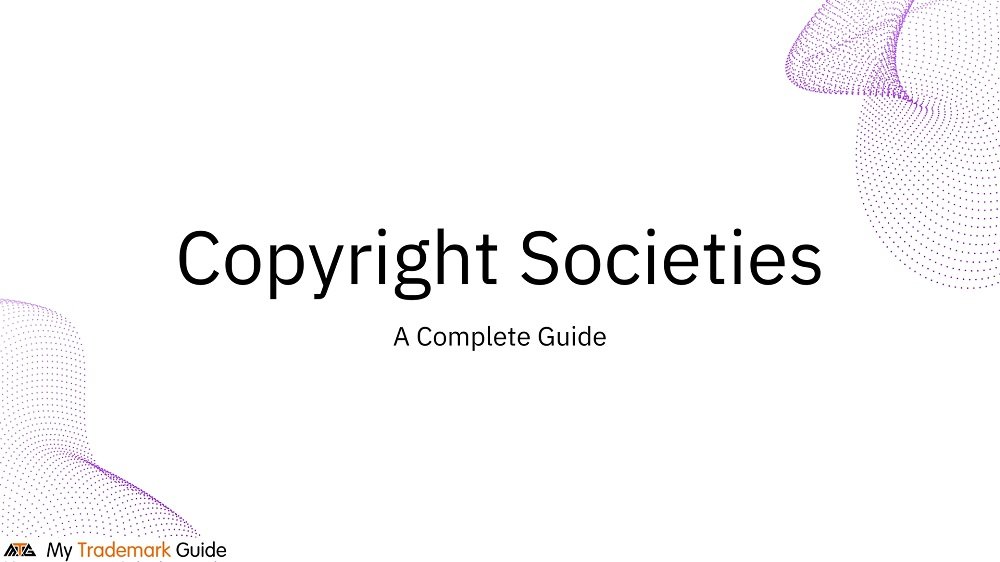Copyright Societies in India: A Complete Guide
Introduction
Copyright plays a crucial role in safeguarding the rights of creators and innovators by granting them exclusive rights to their intellectual property. However, with the vast use and commercial exploitation of creative works—such as music, literature, films, and performances—it becomes challenging for individual copyright holders to track and collect royalties. That’s where copyright societies step in.
In India, copyright societies are registered bodies that manage rights on behalf of creators, ensuring fair compensation and protection. Let’s dive into the legal, functional, and operational aspects of copyright societies in India.
What is a Copyright Society?
A copyright society is a collective management organization (CMO) authorized under the Copyright Act, 1957 to manage copyright or related rights on behalf of a group of rights holders. They license the use of works, collect royalties, and distribute them to the creators.
📖 Definition under Law:
As per Section 33(3) of the Copyright Act, 1957:
“A copyright society means a society registered under Section 33 for the purpose of carrying on the business of issuing or granting licenses in respect of any work in which copyright subsists or in respect of any other rights conferred by this Act.”

Objectives and Functions of Copyright Societies
Copyright societies operate as intermediaries between users and rights owners. Their core functions include:
✅ 1. Issuing Licenses
They grant licenses to users like broadcasters, event organizers, OTT platforms, and radio stations for the public use of copyrighted works.
✅ 2. Collecting Royalties
They collect royalty fees from users of copyrighted works based on predefined tariffs and license agreements.
✅ 3. Distributing Royalties
After deducting administrative charges, the collected royalties are distributed among members (authors, artists, and owners) in a fair and transparent manner.
✅ 4. Legal Enforcement
Copyright societies are empowered to take legal action on behalf of their members against unauthorized usage or infringement.
✅ 5. Negotiation and Tariff Management
They fix and negotiate tariffs based on the usage and type of work to ensure creators get just remuneration.
Copyright Societies Legal Framework
Key Provisions:
- Section 33: Registration and licensing role of copyright societies.
- Section 34 & 35: Control of societies and their governance by members.
- Section 36–36B: Tariff schemes, dispute resolution, and rights management.
- Rules 47 to 61 of the Copyright Rules, 2013: Operational guidelines for functioning, distribution, membership, and transparency.
Registration Requirements:
- Must be a non-profit company (registered under Section 8 of Companies Act).
- Needs Central Government approval.
- Must represent the interests of owners of a particular type of work (e.g., music, literary works, etc.).
- Should ensure democratic functioning and transparency.
List of Registered Copyright Societies in India
Only societies approved and registered under Section 33 are allowed to issue licenses and collect royalties. Here are the copyright societies currently registered and functioning in India:
Society | Domain | Represents |
IPRS (The Indian Performing Right Society Limited) | Musical & literary works | Lyricists, composers, music publishers |
PPL (Phonographic Performance Limited) | Sound recordings | Record labels, music producers |
ISRA (Indian Singers Rights Association) | Performers’ rights (singers) | Singers of sound recordings |
IPAA (Indian Performing Artistes’ Association) | Live performing rights | Performing artists, musicians |
RRR (Recorded Music Performance Rights Association) | Sound recording rights | Independent music producers |
How Copyright Societies Work – A Simplified Example
Let’s say a radio station wants to play Bollywood songs:
- The station must obtain a license from IPRS (for lyrics and composition).
- It must also get a license from PPL (for sound recordings).
- The royalties paid are collected by these societies.
- After administrative deductions, these royalties are distributed to the lyricists, composers, and producers.
Benefits of Copyright Societies
For Rights Owners | For Users/Licensees |
Easier royalty collection | One-stop licensing system |
Legal protection from infringement | Clarity on legal use of content |
Wider market reach | Reduces risk of litigation |
Efficient royalty management | Tariff-based usage costs |
Importance in the Indian Creative Industry
India’s booming media, entertainment, and digital industries have seen an explosion in the consumption of music, films, books, and online content. Copyright societies play a vital role in:
- Promoting fair remuneration for creators.
- Organizing and licensing mass use of content.
- Helping international rights management through global affiliations (like IPRS with CISAC).
- Encouraging compliance and transparency in rights usage.
Misuse and Reforms
While copyright societies are essential, there have been issues related to:
- Lack of transparency in royalty distribution.
- Delay in royalty payments.
- Disputes among stakeholders.
To address this, the Copyright (Amendment) Rules, 2021 emphasized:
- Mandatory disclosures.
- Member-friendly operations.
- Timely payments.
- Democratic control by author members.
Conclusion
Copyright societies in India are the backbone of collective copyright management, empowering creators by ensuring they receive their rightful earnings while enabling smooth access to copyrighted content for businesses. As the Indian creative economy continues to grow, the role of these societies will become even more significant in promoting a balanced copyright ecosystem.




